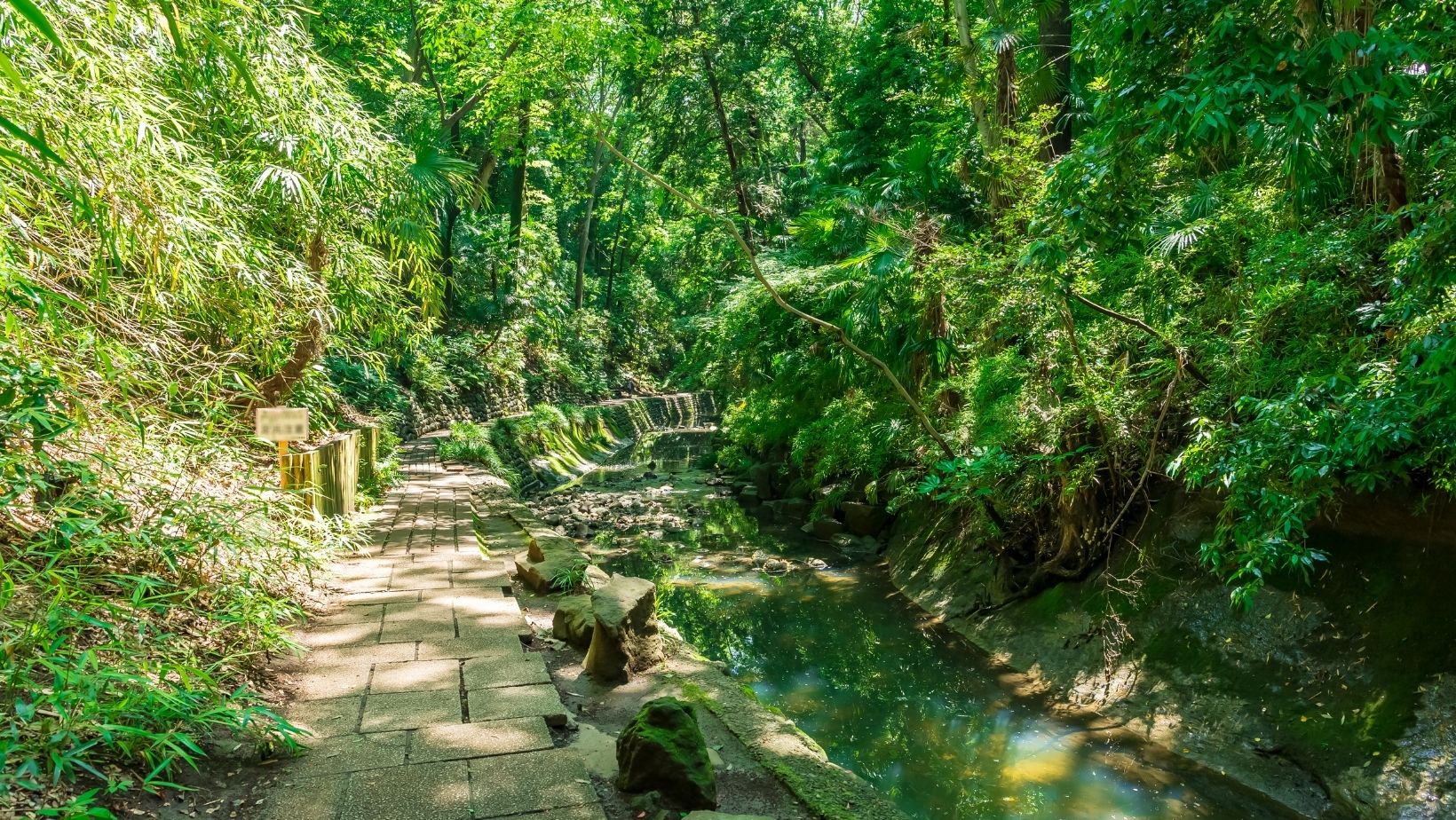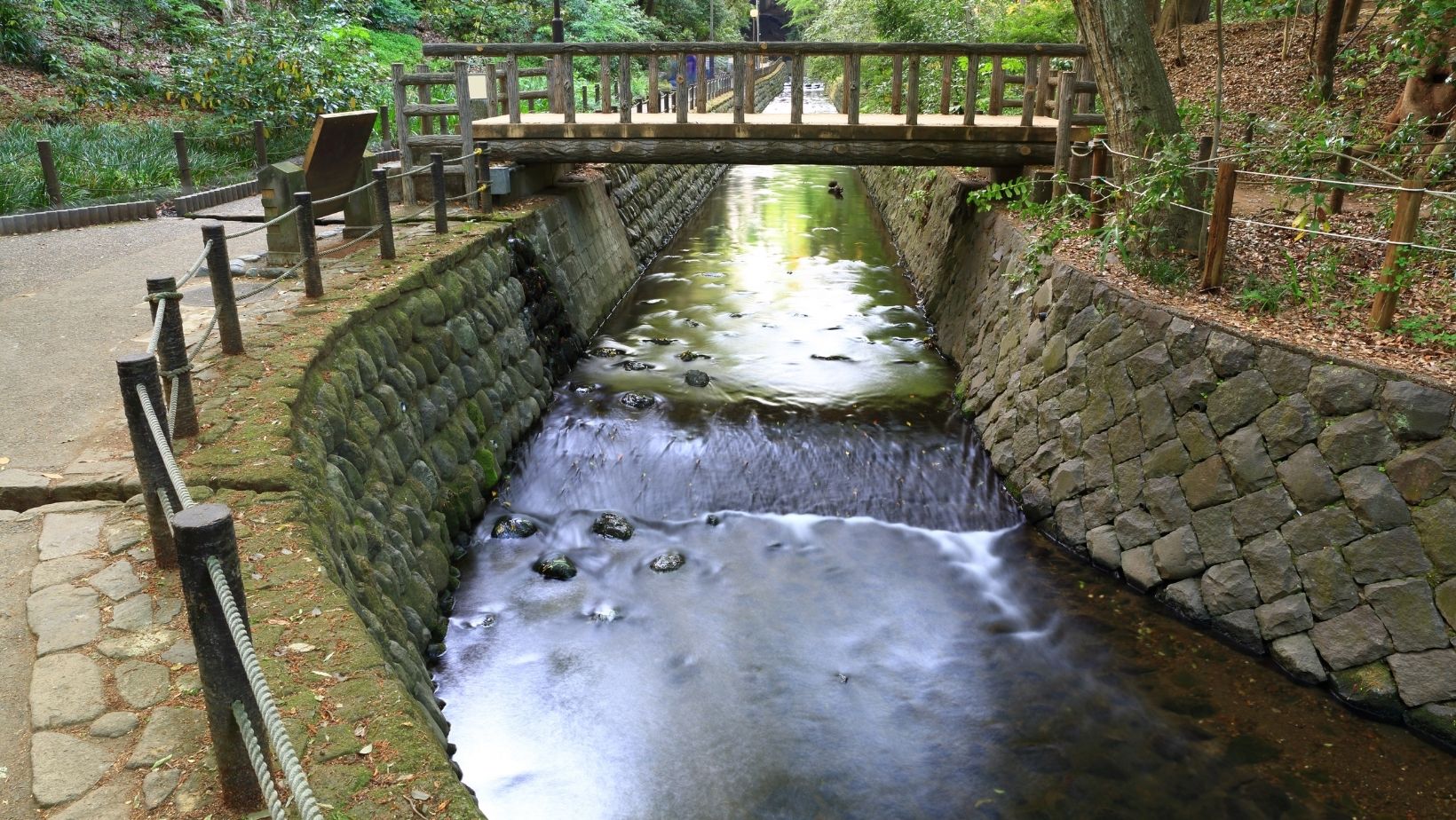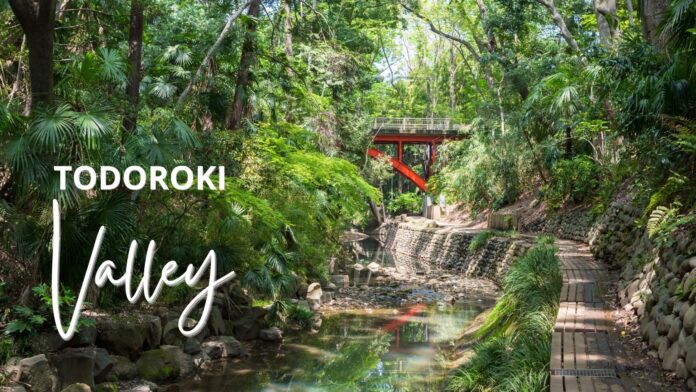The City of Tokyo boasts an abundance of pulchritudinous gardens and parks throughout its 23 wards, but there is only one natural valley. The Todoroki Valley is located in Setagaya ward, just 20 minutes by train west of the hustle and bustle of Shibuya. It’s a simple strolling trail along the Yazawa River, with the trail entrance just a few minutes’ walk from Todoroki Station on Tokyu Railway’s Oimachi Line.
The Todoroki Valley was created as the Yazawa River eroded the southern tip of the Musashino Upland. With an extension of approximately one kilometer, it is the only valley in the 23 cities of Tokyo. Walk down the steps by the Golf-bashi Bridge over the Yazawa River, about a three-minute walk south from Todoroki Station on the Tokyu Oimachi Line, and there is a walking trail on the riverside heading downstream.

The valley is cool even during the summer under the luxuriant growth of Japanese zelkova, bamboo-leaf oak, konara oak, Japanese mountain cherry, and other trees, and the sound of the river and the wild songbirds, while water bubbles up from springs everywhere. Nature embraces the visitor, making it hard to believe that such a place exists within the metropolis.
Further down the walking trail, past the Tamazawa Bridge on Kampachi- dori Ave., the Todoroki Valley Tunnel tomb No.3 appears, a tunnel tomb built between the late Kofun period and the Nara period (about the seventh century). Further on, at the southern tip of the valley are the Japanese garden and shoin-style drawing room building, as well as the Todoroki Fudoson Temple, which is renowned for its cherry blossoms.
In the valley below the Fudoson is the Fudo-no-Taki Falls, where people have been coming from everywhere throughout history and still do today to stand beneath the waterfall for ascetic training. According to legend, the name Todoroki is derived from the roar, or todoroita, of the ringing sound of the Fudo-no-Taki Falls in the valley.

Access
Tokyu Oimachi Line “Todoroki Station” getting off for 3 minutes on foot
Tokyu Bus Corporation and metropolitan Bus “Todoroki” getting off for 5 minutes on foot
Japanese Garden and Shoin-Style Drawing Room Building
Downstream along the Yazawa River in the Todoroki Valley, on the other side of the river from the Todoroki Fudoson Temple, a hall dedicated to Aryacalanatha, is the shoin-style drawing room building built in 1961 and the Japanese garden that surrounds it. The garden has a pond, flowing water, and stone-paved paths, and retains the original landscape created in 1973 by a renowned garden designer. It has a well-sunlit lawn, which can also be used to take a rest during a walk along the valley.
There are bamboo groves and orange orchards around the garden, where the local Todoroki Valley Preservation Society conducts bamboo shoot digging and picking orange-picking field trips for children.
The Japanese garden and the shoin- style drawing room building are closed at night and during the year-end and New Year holidays.
Golf-Bashi Bridge
The bridge at the entrance near Todoroki Station on the Tokyu Oimachi Line is called the Golf-bashi Bridge. This name has its origins in a spacious golf course covering approximately eight hectares developed in the early Showa era by Tokyu Corporation, the railroad company, in what was then Shimonoge. The current bridge is a steel arch bridge built-in 1961 to replace the original wooden bridge.
Todoroki Fudoson Temple
The Fudoson Temple of Todoroki enshrines the Buddhist divinity Wisdom King Fudo (Acala, the Immobile One). The official name of the temple is Ryugozan Myooin (The Hall of Wisdom King on the Mountain of Resounding Waterfall). A popular pilgrimage site, the Fudoson Temple was founded in the late Heian period (circa 1100)by the reviver of the Shingon Buddhist School Kakuban, the “Great Master of Establishing the Doctrine.”
During the late medieval Sengoku period, the Fudoson Temple became the clan of the Setagaya Castle and villagers in the vicinity.
A scenic gorge runs below the hills on which the Fudo Hall stands in the temple. In the middle of the gorge right below the temple is a waterfall (Fudo- no-Taki Falls), a sacred site that attracts devotees from all over for their practice of ablutions and purification. It is said that the name Todoroki is derived from the word todoroku (reverberate) for describing the sound of the waterfall there.
Together with Todoroki Valley, the precincts of the temple serve as a sanctuary of wild animals, birds and vegetation. The temple is celebrated for its splendors of cherry blossoms in spring and maple foliage in autumn.
Discover more from SNAP TASTE
Subscribe to get the latest posts sent to your email.



